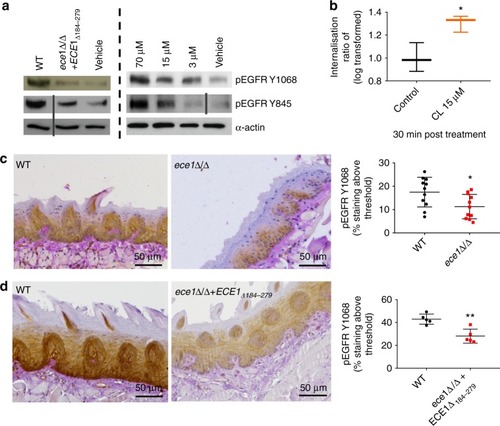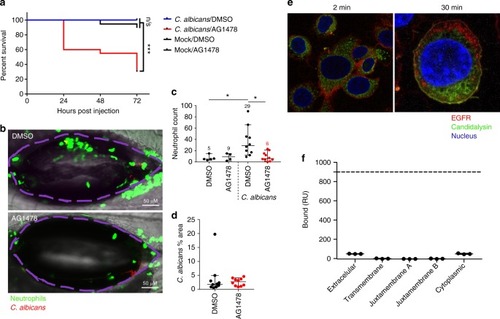- Title
-
Candidalysin activates innate epithelial immune responses via epidermal growth factor receptor
- Authors
- Ho, J., Yang, X., Nikou, S.A., Kichik, N., Donkin, A., Ponde, N.O., Richardson, J.P., Gratacap, R.L., Archambault, L.S., Zwirner, C.P., Murciano, C., Henley-Smith, R., Thavaraj, S., Tynan, C.J., Gaffen, S.L., Hube, B., Wheeler, R.T., Moyes, D.L., Naglik, J.R.
- Source
- Full text @ Nat. Commun.
|
Candidalysin (CL) activates EGFR. |
|
Inhibition of EGFR suppresses neutrophil recruitment and enhances mortality in a zebrafish swimbladder model of candidiasis. Candidalysin does not bind EGFR. PHENOTYPE:
|


